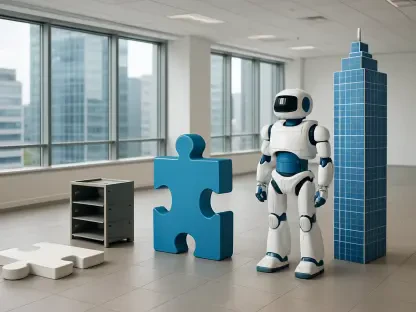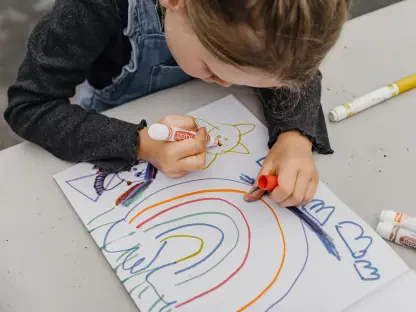In today’s workplace, demographic diversity is one of the most remarkable characteristics, especially when it comes to age. The individuals on staff represent various generations, with each generation characterized by its own set of values, expectations, and behaviors regarding work. Hence, this kind of mismatch often produces better results than homogeneity, where only one perspective dominates.
Understanding and managing a multigenerational workforce is crucial because it impacts nearly every aspect of organizational performance, from productivity and communication to employee engagement and turnover rates. The challenge for today’s HR professionals and managers is to bridge the generational gaps and create a cohesive environment where everyone can succeed together.
This article will investigate the workings of a multi-aged working environment, focusing on the possibilities and hurdles that it might pose and solutions that could be applied to effectively manage and integrate various age groups from within the same workforce.
Profiles of Different Generations
To manage a multigenerational workforce effectively, it’s essential to recognize and understand the distinct characteristics of each generation. Here’s a closer look at the primary groups currently active in the workforce:
Baby Boomers (Born 1946-1964):
Baby Boomers are known to possess a strong work ethic, loyalty, and respect for authority. They crave stability, hence they are identified with long hours spent while working. In the face of digitization, it’s a fact that boomers will always choose one-on-one communication over the other way around, unlike in the lives of present young people. The prime concerns of the baby boomers revolve around job success and economic stability, which are some of the factors affecting their decision-making process.
Generation X (Born 1965-1980):
Generation X employees are known for their independence, resourcefulness, and skepticism towards authority. They typically value a good work-life balance more than their predecessors and are often seen as early adopters of technological advancements in the workplace. Gen X prefers clear and direct communication and tends to dislike micromanagement. Flexible working conditions are usually very important to this cohort, as they balance life and work responsibilities.
Millennials (Born 1981-1996):
Millennials have been at the forefront of changing many traditional business practices. Their love for meaningful work, opportunities for career progression, and a tendency to strive for work-life equilibrium characterize them. This generation is also motivated by personal profit. Social media tools and digital communication are areas where Millennials feel at home since they are tech-savvy.
Collaborative workspaces are more preferred by them than doing things alone. Moreover, feedback is sought after constantly, as well as appreciation for any impact they make on tasks at hand for long hours. Unlike their colleagues, they just like to go home early so as not to miss out on anything.
Generation Z (Born 1997-2012):
As the newest entrants to the workforce, Generation Z is highly tech-savvy, having been raised in the era of smartphones and social media. They value autonomy, crave authenticity, and expect personalization in their work experiences. Gen Z is known for being entrepreneurial, self-reliant, and highly innovative. They prefer quick and frequent communication, often through instant messaging and social media platforms. When it comes to learning, they favor visual and digital methods and often seek out opportunities for self-development and rapid career progression.
Challenges of Managing a Multigenerational Workforce
Communication Barriers
At the workplace, people of different generations may have conflicting communication styles or preferences that cause misinterpretations and delays. In simple terms, Baby Boomers typically like their conversations through a meeting room while Millennials and Gen-Z prefer Zoom calls and instant messaging due to the increased speed as well as technological advances such as smartphones. This might make teamwork difficult since individuals have divergent ways of expressing themselves.
Strategies to Improve Communication Among Diverse Age Groups
- Implement Cross-Generational Training: Workshops that educate employees about different communication styles can foster understanding and patience across age groups.
- Utilize Multiple Communication Channels: To accommodate varied preferences, companies can deploy a mix of traditional and digital communication tools, ensuring that all messages are accessible to everyone in a format they are comfortable with.
- Encourage Mentorship Programs: Pairing younger employees with more experienced ones can improve communication and help bridge generational gaps.
Technological Adaptation
Technology is a significant factor in today’s workplace, and different generations often have varying degrees of comfort and proficiency with new tech. While younger workers may be digital natives, older generations might struggle with rapid technological changes, leading to potential gaps in tech use that can affect productivity and workplace cohesion.
Workplace Expectations and Values
Generational differences can also manifest in varying expectations of what the workplace should offer and how work should be done. Younger generations might prioritize flexibility and purpose, while older ones might value stability and hierarchy. Such conflicting expectations can complicate team dynamics and organizational culture.
Opportunities in a Multigenerational Workplace
Different generations bring varied skills, ideas, and thinking styles that can lead to innovative solutions and products. For instance, in the area of technology, a company may realize that inculcating the experienced problem-solving methods of baby boomers and the technologically savvy inclusions of millennials and Generation Z culminates into extraordinary inventions. Google and IBM are some of the top organizations that have embraced multi-generational aspects by having teams that have age diversity in order to merge all these concepts.
Mentorship and Knowledge Sharing
Mentoring systems that stimulate knowledge transfer across generations may be very helpful. Not only do they support sharing knowledge about abilities, but they also help to create mutual respect and understanding between various ages. In this way, senior employees will share industry facts, their skills, and professional experience, hence leading in the right direction, while fresh minds, on the other hand, help provide insight every time there is a need.
This reciprocal mentorship helps mentors and mentees develop personally and professionally. Companies like Procter & Gamble and General Electric have implemented successful mentorship programs that not only boost skills but also enhance loyalty and retention among employees.
Enhanced Problem-Solving
Diverse age groups in a workplace can enhance problem-solving capabilities by bringing different approaches and experiences to the table. When faced with complex challenges, teams that are diverse in terms of age (and other factors) are often better equipped to come up with innovative solutions because they can draw on a wider range of experiences and viewpoints.
An illustration is offered by the scenario of youthful staff recommending current technologies to enhance production effectiveness and senior staff advising on probable market confrontations according to what they underwent. Merging new ideas with antiquated knowledge typically leads to comprehensive solutions.
How to Manage Multigenerational Teams
Inclusive Leadership
Inclusivity is the basis of effective leadership in a multigenerational workplace. Inclusivity calls for leaders to come up with approaches that uphold respect and appreciation of everyone regardless of age. This also involves the identification and elimination of any generational prejudice deeply rooted in the group. An effective leader should have knowledge about what is unique about each generation and, hence, be able to utilize a variety of gifts in existence. To allow them to tap into these diverse strengths, training sessions ought to be conducted on how distinct generations have contributed to organizational development.
This training can encompass learning how to communicate effectively with each generation, understanding their different values and work styles, and knowing how to motivate them. Organizations like IBM and Deloitte have successfully implemented leadership training programs that focus specifically on managing age diversity, resulting in more cohesive and productive teams.
Flexible Work Arrangements
Adapting work policies to meet the diverse work-life balance demands of different generations can significantly enhance job satisfaction and productivity. For example, while Baby Boomers may appreciate more traditional work arrangements, Millennials and Generation Z might value the flexibility to work remotely or have varying hours.
Implementing flexible work arrangements such as telecommuting, flexible hours, and compressed workweeks can help meet these varied preferences. Companies like Cisco and Adobe offer flexible work policies that have been shown to benefit employees across all generations, leading to increased employee retention and satisfaction.
Performance and Recognition
Recognizing and rewarding employees in a way that resonates with their motivational drivers is crucial in a multigenerational workforce. It is important to adapt recognition and reward systems to cater to different preferences. For instance, while financial rewards might be more valued by older generations, younger workers might prioritize recognition through career development opportunities or public acknowledgment of their contributions.
Final Thoughts
Organizations are faced with a double-edged sword as they deal with diverse age groups in their workplaces. To make it more enticing, though, organizations can tap into this idea to create innovation and productivity. What drives this concept are the strategies discussed above, namely, being an inclusive leader, flexibility in work schedules and modes, or performance appraisal systems/tools without forgetting an individualized recognition scheme.
As the workforce continues to evolve, with new generations entering and older ones staying longer, the importance of managing generational diversity effectively will only grow. Organizations that proactively address these dynamics are likely to see not only enhanced employee satisfaction and retention but also improved business outcomes. The key lies in commitment from the top down to build and sustain an environment where every generation feels valued, understood, and engaged.









